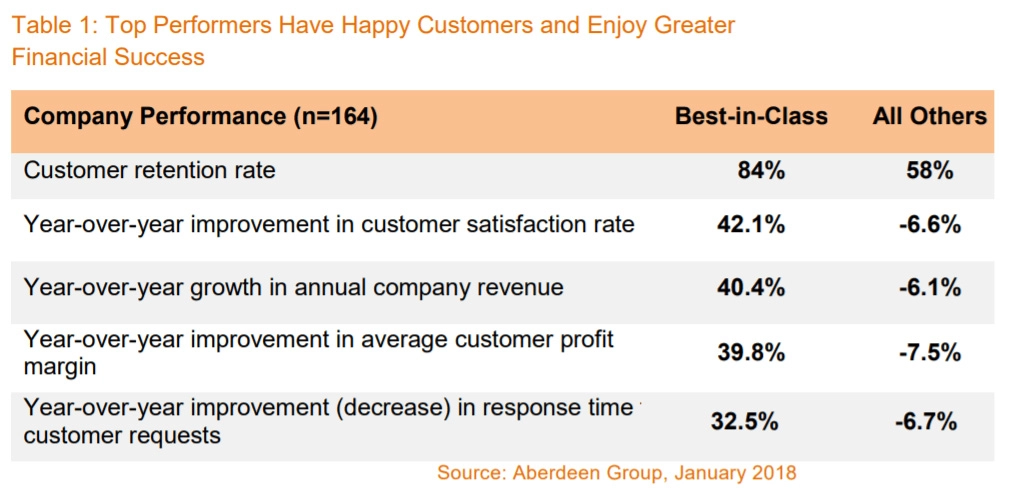
Introduction
Stories of brand losses and brand demise have been all too common in the news over the last decade or so: From voice of the customers examples such as how one journalist took down Dell with one simple blog, to how influencers like kylie Jenner can influence millions to leave a brand because the brand is no longer “user-centric”, these stories are a stark reminder of why it’s important to listen to your customers.
The thing is, we live in a time when customers’ needs aren’t only increasing, but also where those needs must be met with immediacy. Today, any brand that doesn’t fulfil customer expectations with immediacy or mishandles customer complaints suffers serious reputation damage or soon becomes a forgotten story.
But, over time, brands have learned from their mistakes. One of the ways that brands have managed to consistently keep up their reputation and stay in business is by investing in VoC initiatives. These initiatives give customers a way to reach and engage with your brand directly.
What is VoC?
VoC is short for voice of the customer. VoC marketing helps brands to employ a closed-loop approach to marketing so that every action, product iteration, advertisement or campaign, fulfils what the customer wants.
Feedback represents the voice of the customer as it is the most effective way you can learn about the customers’ needs, experiences and expectations. After you receive feedback, you can implement product and process improvement measures.
Additionally, feedback also gives you a look into your customer’’ purchase decision process. When you know how your customer thinks, you can leverage that position and do better than your competition.
Why is voice of the customer important?
According to research from Gartner , customer feedback
- Increases cross selling and upselling success by up to 20%
- Can decrease the cost of customer retention by 25%
A 2018 voice of the customer study user conducted by Aberdeen Group among 164 companies found that companies that implement successful voice of customer programs have a higher customer retention rate than companies that don’t (84% vs 58%). Those companies also experience higher company revenue, better profit margins and better customer response time.

By listening to the voice of the customer, you can:
- Understand your customers’ needs
- Make customer-centric decisions in response to those needs
- Take advantage of opportunities, such as the right time to launch new products
- Improve the reputation of your brand
- Minimize negative customer experiences
- Improve the product innovation process by tailor making your offering to suit different personas
- Improve collaboration within your company, so that your teams work on optimizing every stage of the customer journey
Voice Of The Customer Methodologies
To know what the customer thinks, you need to ask the right voice of the customer questions and for that, you need tools and a well-thought out methodology.
But before we go into that, we need to stress that after you ask questions and get answers, that should not be the end. Take your process a step further and:
- Analyze those comments. What is the customer saying?
- Pick out the key issues within each comment. What is the customer’s requirement?
- Decide on next steps. what actions should you take to fulfil the customer’s need?
That said, you can collect customer feedback using the voice of the customer tools below:
1. Surveys
Online surveys will help you to gather data from groups of any size. For a survey to be successful it must encompass the following qualities:
- The survey should be short and focused. The questions should also be short and concise
- Ask yes/no or multiple-choice questions
- Be direct and to the point
- Your survey should be targeted at your persona or a specific segment
2. Interviews
You cannot target a large group of people with interviews like you can with surveys, but interviews are valuable voice of the customer tools as they have the following advantages when it comes to understanding customer needs:
- Interviews are conducted one-on-one, making them more engaging
- They have a higher response rate than surveys
- You can ask follow-up questions and get immediate answers
- Everything happens in real time
3. Social Media
Customers often comment about brands on social media. This can be good or bad depending on the customer’s interaction with your brand. Social media is a great feedback collection tool because:
- People tend to be candid on social media
- One comment can attract comments from other people who then share their experiences, good or bad. This means that you can get feedback from many people, without having to engage all of them.
- You can respond to a problem in real time and reach a lot of people with your response.
- As customer service is one great way of dealing with customer complaints, immediate response shows your brand’s agility when it comes to dealing with customers.
- You also get to salvage your reputation by going over and above to attend to a customer’s complaint.
4. Call Recordings
It’s common practice for brands to record customer calls. Those recordings can be a source of valuable voice of the customer insights. While reviewing customer call recordings, ask yourself:
- What questions did the customer ask?
- What is their level of satisfaction with your product?
- Did the customer call to complain? Was the customer willing to listen? Did you solve their problem? Was the customer happy with the solution?
5. Behavioral Data
When people come to your website, they will interact with it in different ways depending on what they are looking for.
For instance
- Their time on page will differ
- Some will bounce off after landing on the first page, while others will visit other pages
- Some will bookmark products while others will check out
All this is customer behavior data and if you can capture and analyze it, you can get key insights into different areas of your brand. If you see a trend where customers bounce off on the first page, this could indicate that some design elements on that page aren’t working.
6. Customer Reviews
Online reviews on websites such as yelp can tell you a lot about how people perceive your brand. Positive reviews can improve your brand’s reputation and contribute to its success. On the other hand, negative reviews give you an opportunity to prove yourself by showcasing your customer service ability.
Use online reviews to manage your reputation and improve the experience of your customers in the future.
7. Employee Feedback
Customer-facing employees are in a prime position to directly capture customer feedback and either resolve it or report it back to the business.
If the employees face obstacles while attempting to address customer concerns, they can also escalate this to the concerned teams. For instance, an SDR in the field might not have access to customer data regarding a past customer complaint. This could mean that teams aren’t operating in alignment. It could also mean that your company lacks a proper voice of the customer methodology.
Make it a point to engage employees in regular brainstorming sessions or surveys to get more details of their daily work and challenges.
How Can You Build Successful Voice of the Customer Initiatives?
Most customer service professionals will agree on the following:
- Customer satisfaction is important
- To achieve customer satisfaction, you need to know what your customer thinks. Hence “voice of the customer”
- Customer satisfaction begins by building a customer-centric organization.
Before you rush into implementing any voice of customer programs, you need to first work on ensuring that everyone in your company understands that they should put the customer first.
Below are some factors that can help you establish company-wide appreciation for a great customer experience:
Executive buy in. Your department heads and managers set the tone for team behavior, hence performance. Without executive buy in, you are unlikely to make a significant impact among your other employees.
Goals. Do you have a clear and specific vision for VoC? If you don’t, gather your team and together, define your vision for customer satisfaction. Make the vision statement short and simple to understand. If you will be sharing that vision with top executives, make sure you can show how it supports the achievement of overarching business goals.
Team alignment. Once your teams understand your VoC vision, all their actions should support the attainment of that vision
Team collaboration. Teams that act in isolation are likely to work at cross-purposes. When your teams collaborate, they will come up with more impactful customer initiatives for keeping your customers happy.
Patience. Nothing works overnight. Accept that it will take time to see any positive returns from your investment. Our most important piece of advice to you, therefore, is to be patient and stay the course.
Conclusion
How can you guarantee a great customer experience throughout your organization? How can you build strategy that is customer-centered? How can your product development, sales and marketing teams make your customers happy?
Through voice of the customer data.
As you take steps to work on your voice of customer methodology, take note of the following voice of the customer best practices:
- Segment your audience
Dividing your audience into segments and developing personas for each segment or micro segment will ensure that you ask the right questions to the right people which, consequently, will give you relevant data. If you don’t segment, you are likely to irritate a large number of customers with irrelevant questions.
- Act and implement
There is no point in collecting data if you will not use it. Acting on the feedback is the best way to show customers that you care about what they think. Once you create a company-wide customer-centric culture, you will reduce the time it takes from the time a customer logs a complaint to the time your team resolves it.
- Invest in quality tools and human resources
Gathering customer feedback is a data intensive and time consuming process that cannot be conducted manually. As such, identify tools that will result in a closed-loop feedback collection and implementation process. These tools should have a built in CRM, or the ability to integrate with your CRM and other proprietary tools that you have.
In addition, hire a team that not only knows how to interpret data, but also how to implement the insights drawn from that data.
- Employ an omni-channel approach to “listen”
This is so vital as it is by listening that you will learn. An omni-channel approach will ensure you capture every bit of customer feedback out there.
- Measure, experiment, test
The RoI of your VoC initiatives should be clear as this will guarantee sustainability in the long term.
In addition, through the A/B testing process, you can experiment with different approaches and implement the most effective ones. You can even go a step further by comparing survey results with behavioral data, and when you marry the two, you could arrive at a more accurate understanding of a customer’s needs.
Our blog
Latest blog posts
Tool and strategies modern teams need to help their companies grow.

Beat your competitors and exceed your revenue goals this year by shifting your focus ...

SaaS growth has never been more challenging. SaaS companies must move faster and smar...

In the absence of a solid lead scoring system, your sales team will spend time pursui...




